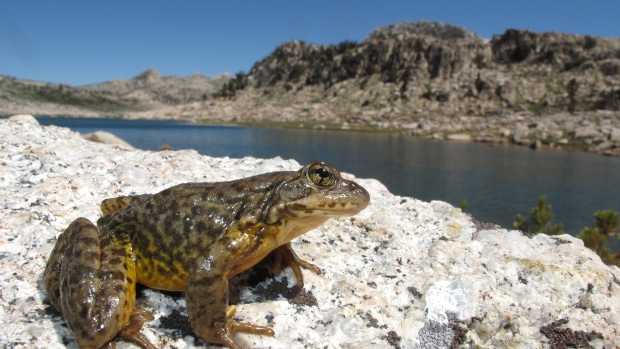The researchers say the resistance they have observed in the frog may be due to natural selection for more resistant genotypes, acquired immunity and differences between populations of the species that pre-date Bd exposure
Researchers over the course of 15 years have been reintroducing the Sierra Nevada yellow-legged frog (Rana sierrae) at sites in the Sierra Nevadas in spite lof the fact those sites have Batrachochytrium dendrobatidis (Bd) present. Some populations of the frog, which has been decimated by the deadly fungal disease, have become resistant to Bd and have eventually recovered from the fungus with increased resistance to infection.
The researchers say the resistance they have observed in the frog may be due to natural selection for more resistant genotypes, acquired immunity and differences between populations of the species that pre-date Bd exposure. They surmise that the possible evolution of resistance to Bd by the frog is consistent with the notion of “evolutionary rescue” in which rapid evolutionary change “increases the frequency of adaptive alleles and restores positive population growth.”
This also may help to expand recovery by using frogs that are resistant to the fungal disease in reintroductions in habitats where the frogs are extirpated.
In their study, the researchers reintroduced populations of yellow legged frogs that are resistant to Bd and noted that these resistant frogs were able to successfully reproduce even though Bd is present in the relocation sites. They also determined that these reintroduced frogs have a low probability of extinction over the next 50 years. In all, 24 reintroductions were conducted from 2006-2020.
Mixed Results For Frogs Translocated To Areas Devastated By Batrachochytrium dendrobatidis
Each reintroduction included adult frogs Bd positive donor populations. 1 of three were recovering at the time of the reintroduction. They were translocated to 12 recipient sites in the vicinity.
After translocation, the researchers estimated adult survival and recruitment of new adults and found of the 12 reintroduced populations, nine showed evidence of successful breeding and reproduction following the release in spite of the fact that Bd was present in the reintroduction sites. One year frog survival estimates were high. The complete success of the reintroduction of these frogs will be determined if and when a self-sustaining population becomes established at the sites, the researchers said.
Then complete study, Reintroduction of resistant frogs facilitates landscape-scale recovery in the presence of a lethal fungal disease” can be read on the Nature Communications website.


